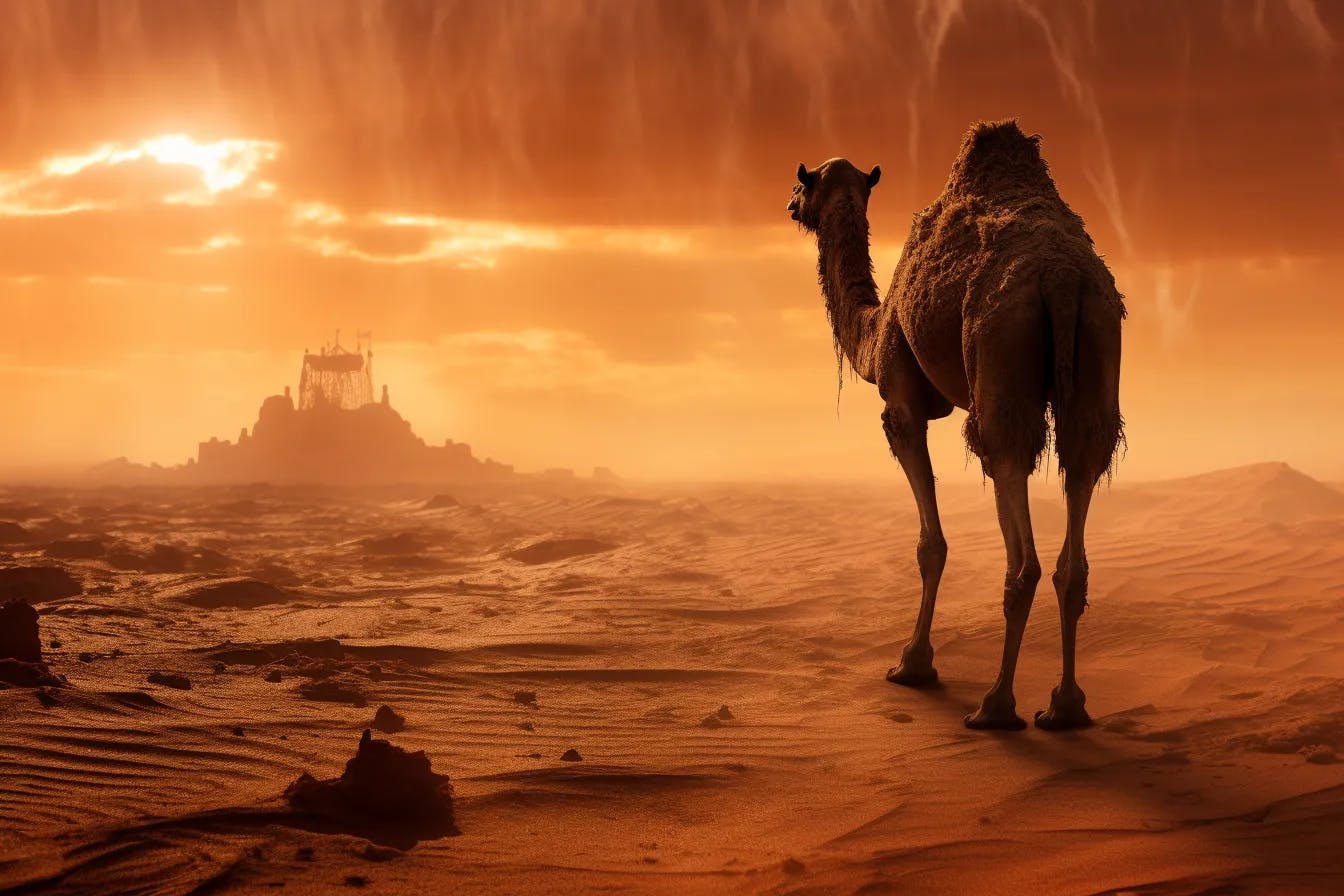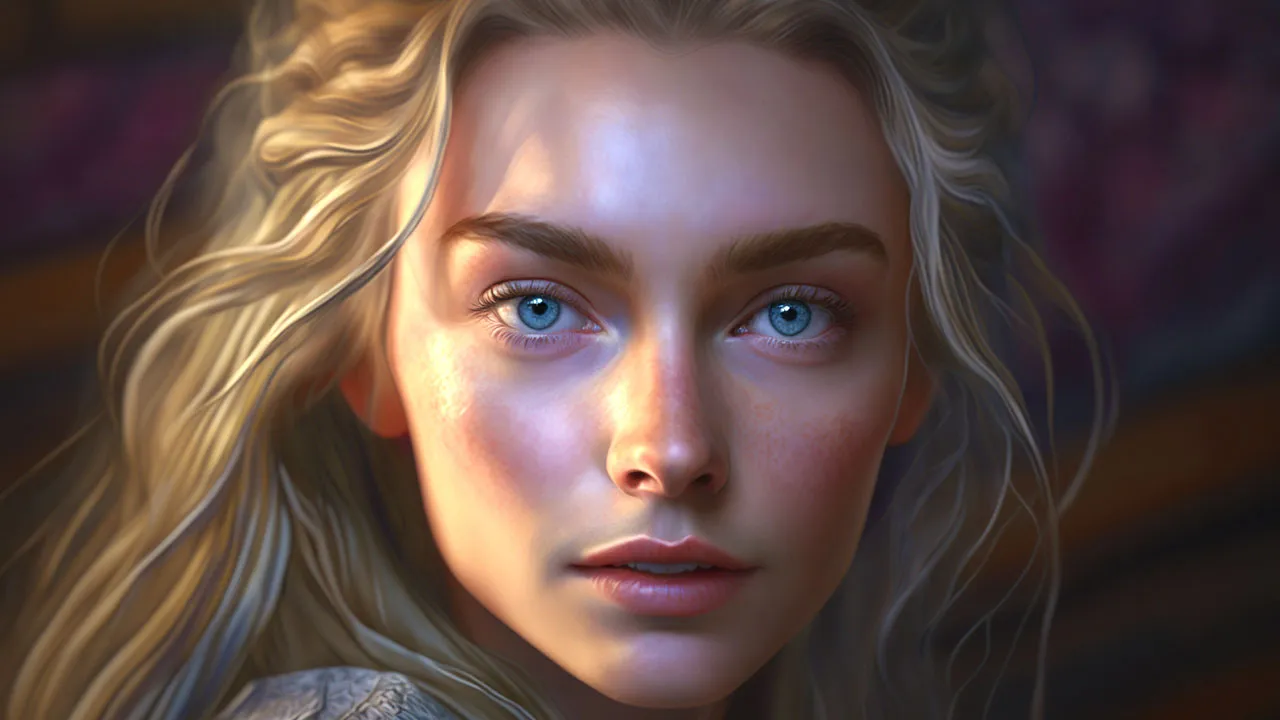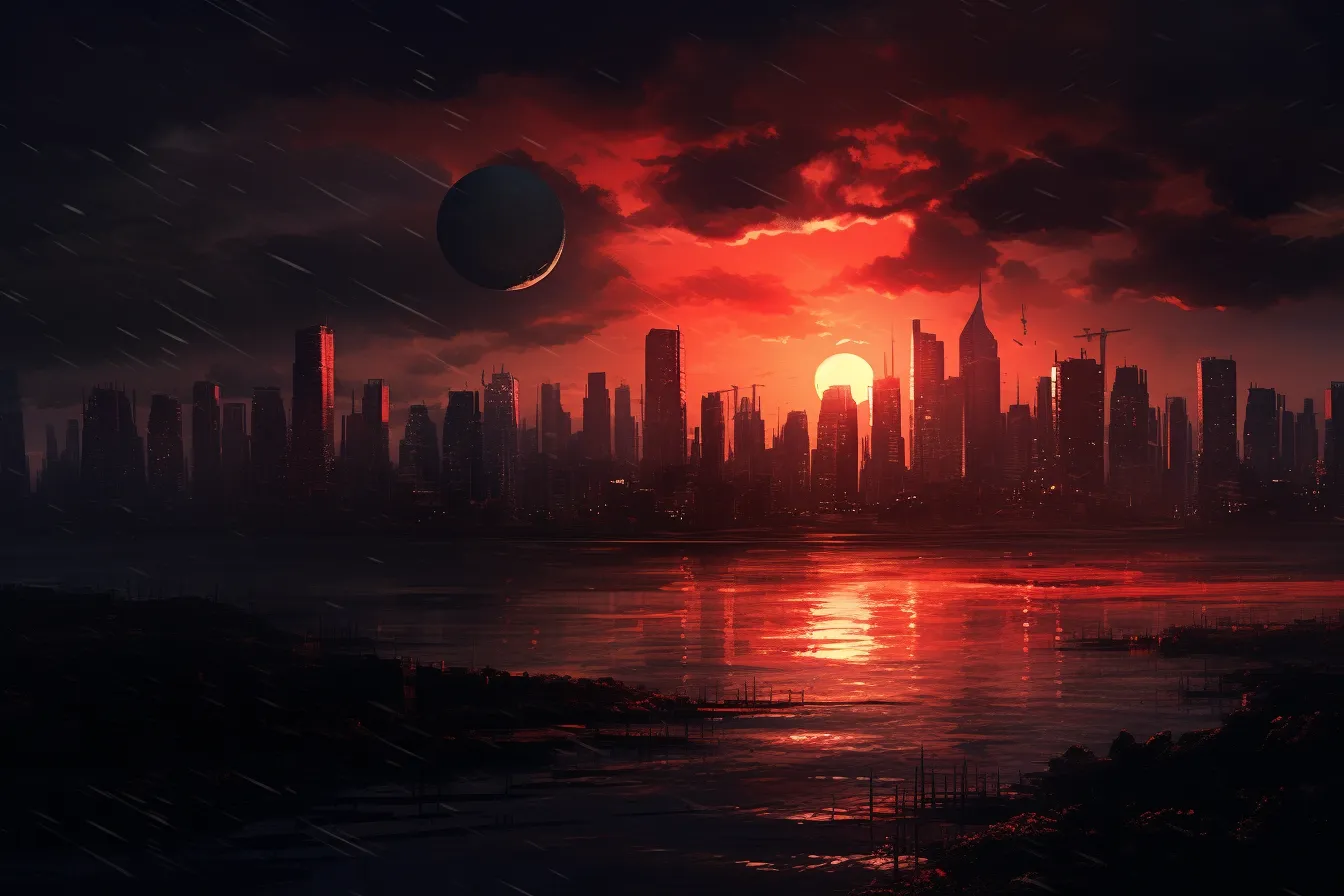Midjourney Negative Prompt Tutorial
Published on

Welcome to the ultimate guide on mastering Midjourney Negative Prompt. If you've ever dabbled in the world of AI-generated images, you've likely heard of Midjourney. This powerful tool has revolutionized the way we think about image generation, but are you using it to its full potential? That's where negative prompts come into play, a feature often overlooked but incredibly powerful for refining your image outputs.
In this guide, we'll dive deep into the nitty-gritty of Midjourney Negative Prompt. From understanding its basic functionality to exploring advanced techniques and troubleshooting common issues, this article aims to be your one-stop resource. So, let's get started!
Understanding the Basics of Midjourney Negative Prompt
What is Midjourney Negative Prompt?
A Midjourney Negative Prompt is essentially a command that tells the Midjourney AI what not to include in the generated image. While a regular prompt might tell the AI to create an "ocean sunset," a negative prompt could specify "--no boats," ensuring that the resulting image is free of any watercraft. This feature is particularly useful when you want to avoid certain elements that could otherwise randomly appear in your generated images.
Why Use Negative Prompts in Midjourney?
- Precision: Negative prompts allow you to fine-tune the AI's output, ensuring that only the elements you want appear in the final image.
- Efficiency: By specifying what you don't want, you save time that might otherwise be spent generating multiple images until you get one you like.
- Creativity: Negative prompts can also be a creative tool, allowing you to experiment with different compositions and styles.
For instance, if you're creating a serene nature scene and don't want any signs of human activity, you could use a prompt like "forest waterfall --no buildings, people." This ensures that Midjourney focuses solely on the natural elements, giving you a pristine, untouched landscape.
How to Use a Single Negative Prompt
Using a negative prompt in Midjourney is straightforward. Here's a step-by-step guide:
- Open Midjourney: Navigate to the Midjourney platform where you usually input your prompts for image generation.
- Enter Your Main Prompt: Type in the main prompt describing what you want in the image. For example, "tropical beach."
- Add the Negative Prompt: After your main prompt, add a space and then type "--no" followed by the elements you want to exclude. For example, "tropical beach --no people."
- Generate the Image: Click on the button to generate the image, and Midjourney will produce an image based on your prompt, minus the elements you've specified to exclude.
Sample Prompt:
tropical beach --no people
By following these steps, you'll get an image of a tropical beach without any people in it, allowing you to capture the natural beauty of the scene without any distractions.
Advanced Techniques for Midjourney Negative Prompt
The Power of Multi-Prompts in Midjourney Negative Prompt
Multi-prompts take your Midjourney experience to the next level by allowing you to specify multiple conditions in a single prompt. This is especially useful when you want to generate complex images with various elements. But how does this work with negative prompts?
In Midjourney, you can separate different parts of a prompt using double colons ::. Each part is considered individually by the AI, giving you more control over the final output. When combined with negative prompts, this feature becomes a powerhouse for customization.
Sample Prompt with Multi-Prompts and Negative Prompt:
beach sunset::mountain landscape --no people
In this example, Midjourney will generate an image that combines a beach sunset and a mountain landscape while ensuring that no people are included.

How to Use Multi-Prompts with Negative Prompts
- Start with Your Main Prompts: Begin by entering the primary elements you want in your image, separated by double colons. For example,
beach sunset::mountain landscape. - Add the Negative Prompt: After your last main prompt, add a space and then include your negative prompt. For instance,
--no people. - Generate the Image: Click the button to generate the image.
Sample Prompt:
beach sunset::mountain landscape --no people
By following these steps, you'll receive an image that beautifully merges a beach sunset and a mountain landscape, all while keeping it free of people.
Weighting Your Prompts in Midjourney Negative Prompt
Another advanced technique involves the use of weights. In Midjourney, you can assign numerical weights to different parts of your prompt to indicate their importance. This is done by adding a number after the double colons ::.
Sample Prompt with Weights:
beach sunset::3 mountain landscape::1 --no people
Here, the weight of "beach sunset" is 3, and "mountain landscape" is 1. This means the final image will focus more on the beach sunset while still including the mountain landscape.
How to Use Weights with Negative Prompts
- Enter Your Main Prompts with Weights: Type in your main prompts and add weights using the format
::[weight]. For example,beach sunset::3 mountain landscape::1. - Include the Negative Prompt: Add your negative prompt at the end, just like before. For instance,
--no people. - Generate the Image: Click the button to generate the image.
Sample Prompt:
beach sunset::3 mountain landscape::1 --no people
The resulting image will be predominantly a beach sunset with a lesser focus on the mountain landscape, and it will exclude people.
Combining Multi-Prompts and Weights in Midjourney Negative Prompt
For the ultimate control, you can combine both multi-prompts and weights in a single command. This allows you to create highly customized images that meet your exact specifications.
Sample Prompt Combining Both:
beach sunset::3 mountain landscape::1 --no people boats
Here, not only are you specifying the focus of each element, but you're also excluding multiple items—both people and boats—from your image.
Steps to Combine Both Techniques
- Enter Main Prompts with Weights: Start by typing your main prompts along with their respective weights. For example,
beach sunset::3 mountain landscape::1. - Add Multiple Negative Prompts: After your weighted main prompts, add your negative prompts separated by spaces. For instance,
--no people boats. - Generate the Image: Click the button to generate the image.
Sample Prompt:
beach sunset::3 mountain landscape::1 --no people boats

Tips for Using Midjourney Negative Prompts
What to Do When Midjourney Negative Prompt Is Not Working
Sometimes, despite your best efforts, you might find that the Midjourney Negative Prompt feature isn't working as expected. Don't worry; you're not alone. Here are some common issues and how to resolve them:
- Incorrect Syntax: Make sure you're using the correct syntax for negative prompts. The format should be
--no [element]. - Conflicting Prompts: If your negative prompt directly contradicts your main prompt, the AI might get confused. For example, a prompt like "sunny beach --no sun" is contradictory.
- Software Bugs: Occasionally, the issue might be on the Midjourney end. Keep your software updated to the latest version to avoid such problems.
8Steps to Troubleshoot*:
- Check Your Syntax: Ensure that you've entered the negative prompt correctly.
- Review Your Prompts: Make sure there are no conflicts between your main and negative prompts.
- Update Midjourney: Ensure you're using the latest version of the software.
- Test with a Simple Prompt: Try using the negative prompt with a simple main prompt to see if the issue persists.
Sample Prompt for Testing:
forest --no animals
If the problem persists, consider reaching out to Midjourney's support for further assistance.
Midjourney Negative Prompts in v4 and v5
Different versions of Midjourney, such as v4 and v5, may have their own set of quirks when it comes to negative prompts. Here's what you need to know:
- Midjourney Negative Prompt v4: Earlier versions like v4 may not support all the advanced features like multi-prompts or weights.
- Midjourney Negative Prompt v5: The latest versions usually offer more robust support for negative prompts but may have new syntax or features that require a learning curve.
Here's How to Adapt to Version Changes:
- Read the Release Notes: Whenever a new version is released, go through the release notes to understand any changes to the negative prompt feature.
- Test Your Prompts: Before diving into complex projects, test out your usual negative prompts to ensure they still work as expected.
- Consult the Documentation: The official Midjourney documentation is a great resource for understanding version-specific features.
By being proactive and staying updated on the latest versions, you can avoid many common issues associated with Midjourney Negative Prompt.
Practical Applications of Midjourney Negative Prompt
Using Negative Prompts for Better Image Composition
One of the most exciting aspects of Midjourney Negative Prompt is its ability to enhance the composition of your generated images. By strategically excluding certain elements, you can create more focused and aesthetically pleasing visuals.
For example, if you're generating an image of a city skyline but want to focus solely on the architecture, you can use a negative prompt to exclude cars, people, or even the sky. This allows the viewer to focus entirely on the buildings, making for a more impactful image.
Sample Prompt for Better Composition:
city skyline --no cars people sky
Steps for Improved Composition:
- Identify Your Focus: Determine the main element you want to highlight in your image.
- List Distractions: Make a list of elements that could distract from your main focus.
- Craft Your Negative Prompt: Use this list to create a negative prompt that excludes these distractions.
- Generate and Review: Generate the image and review it to see if it meets your compositional goals.
By following these steps, you can significantly improve the composition of your Midjourney-generated images, making them more engaging and effective.
Negative Prompts for Specific Scenarios:
Negative prompts are not just for general use; they can be incredibly useful for specific scenarios or industries. For instance, if you're in real estate and want to generate images of empty rooms, you can use a negative prompt to exclude furniture, decor, or even light fixtures.
Sample Prompt for Real Estate:
modern living room --no furniture decor
This will give you a clean slate, allowing potential buyers to better visualize their own belongings in the space.
Steps for Scenario-Specific Negative Prompts:
- Understand the Requirement: Know what the specific scenario or industry demands.
- Identify Unwanted Elements: List down the elements that are not required or could be distracting.
- Use Negative Prompt: Incorporate these elements into your negative prompt.
- Generate the Image: Create the image and review it to ensure it fits the specific needs.
By tailoring your negative prompts to fit specific scenarios, you can create highly specialized images that serve a particular purpose or audience.
Best Practices for Using Midjourney Negative Prompt
Starting Simple with Midjourney Negative Prompt:
When you're new to using negative prompts, it's easy to get carried away and start adding multiple conditions. However, it's often best to start simple. Begin with one or two negative conditions and gradually add more as you become more comfortable with how they affect your images.
Sample Prompt for Beginners:
beach sunset --no people
Steps for Starting Simple:
- Choose a Basic Main Prompt: Start with a straightforward main prompt like "beach sunset."
- Add a Single Negative Condition: Add one negative condition to your prompt, such as "--no people."
- Generate and Assess: Create the image and assess how well the negative prompt worked.
Avoiding Conflicts in Your Prompts:
One common mistake is creating prompts that conflict with each other. For example, a prompt like "sunny forest --no trees" is inherently contradictory and will confuse the AI.
Steps to Avoid Conflicts:
- Review Your Prompts: Before generating the image, review your prompts for any contradictions.
- Test with Simpler Prompts: If you're unsure, test the negative conditions with simpler main prompts to ensure they don't conflict.
By following these best practices, you can make the most out of the Midjourney Negative Prompt feature, creating images that are more aligned with your vision and requirements.
Conclusion
Midjourney Negative Prompt is a powerful feature that offers a level of customization and control that can significantly enhance your image generation experience. Whether you're a casual user looking to create the perfect vacation photo or a professional artist working on a complex project, understanding how to effectively use negative prompts can be a game-changer. So go ahead, start experimenting with negative prompts and unlock a whole new world of creative possibilities.
FAQs about Midjourney Negative Prompt
How Do You Give a Negative Prompt in Midjourney?
To give a negative prompt in Midjourney, you simply add --no followed by the element you want to exclude, right after your main prompt. For example, if your main prompt is "sunny beach" and you want to exclude people, your complete prompt would be sunny beach --no people.
Steps to Give a Negative Prompt:
- Open Midjourney: Navigate to the platform where you usually input your prompts.
- Enter Main Prompt: Type your main prompt in the designated area.
- Add Negative Prompt: Add a space after your main prompt and then type
--nofollowed by the element you want to exclude. - Generate Image: Click the button to generate the image based on your prompt.
How Do You Say No in Midjourney?
Saying "no" in Midjourney is done through the use of negative prompts. You use the --no syntax followed by the element you wish to exclude from the generated image. For example, if you want a forest scene without any animals, you would use the prompt forest --no animals.
What is the Negative Prompt Model?
The "Negative Prompt Model" isn't a separate model within Midjourney; rather, it's a feature of the existing Midjourney system that allows you to specify what you don't want in an image. By using the --no syntax, you can exclude specific elements, thereby customizing the AI's output to better match your vision.
How Do You Emphasize a Prompt in Midjourney?
To emphasize a particular element in your Midjourney prompt, you can use weights. Weights are numerical values that you attach to different parts of your prompt to indicate their importance. For example, if you want to generate an image that focuses more on a "beach" than a "sunset," you could use the prompt beach::3 sunset::1.
Steps to Emphasize a Prompt:
- Open Midjourney: Go to the platform where you input your prompts.
- Enter Main Prompts: Type the elements you want in your image.
- Add Weights: After each element, add
::followed by a numerical weight to emphasize that element. - Generate Image: Click the button to generate the image.
By using weights, you can guide the AI to focus more on certain elements, giving you more control over the final image.
